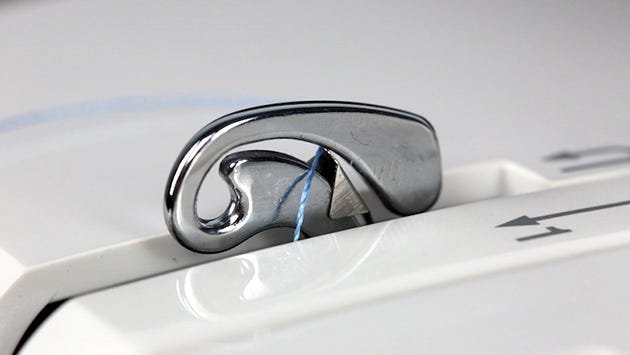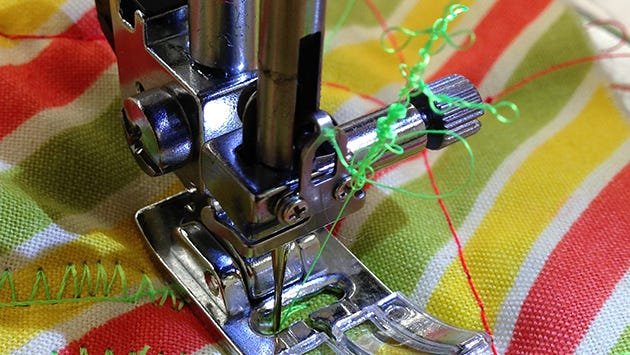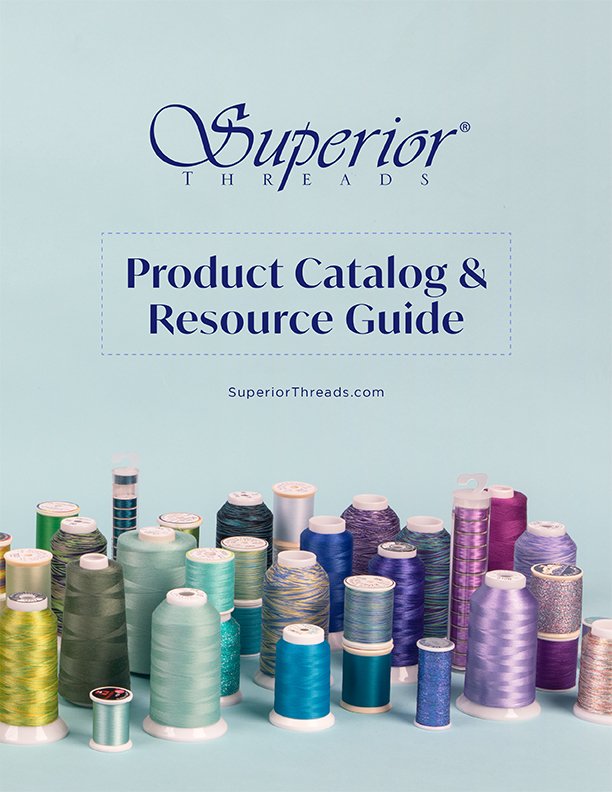Superior Education
TROUBLESHOOTING BROKEN THREAD
- TROUBLESHOOTING
- TAKE-UP LEVER
Start by rethreading
Everyone experiences unexpected thread breaks, bird nesting (thread gathering beneath the needle plate), or terribly uneven thread tension. Some experience this more than others. While the quality of the thread being used will affect the overall stitchability, for the sake of this educational article, we'll assume that you are using quality thread.
Out of habit, whenever there's a problem with the stitch we tend to immediately blame the thread. While the thread can be the culprit for the stitch problems you're encountering, there's something that we should be addressing first. Your machine's take-up lever. The take-up lever is the metal lever (looks like a hook) that is on top of your machine and moves up and down while you sew. This lever is what pulls the thread off the spool and helps supply an even feed of thread to your needle. If the top thread falls out of the take-up lever or if it isn't securely set inside the take-up lever, you will not experience even stitches and may endure thread breaks and bird nesting.

Example of a properly-threaded take-up lever

Example of a thread not seated correctly in take-up lever
The first action we recommend taking when you experience thread breakage, bird nesting, or uneven tension is to rethread your machine. You wouldn't believe how many times this solves the problem and it's such a time saver to start the troubleshooting process by rethreading instead of changing needles, adjusting tension, changing threads, switching to a different stitch, etc. right off the bat. All home sewing machines, embroidery machines, and longarm machines have a take-up lever and it will have a shape reminiscent of a hook. Some machines have an extra metal plate of spring, which helps to keep threads from sliding totally out of the lever. If your machine's take-up lever has a spring or plate, make sure that the thread is in the divot of the hook for a better stitching experience.
Once you have rethreaded your machine, start sewing again. If you are still experiencing problems, you have ruled out incorrect thread delivery with the take-up lever and can start addressing potential causes by reading through our detailed Troubleshooting Reference Guide.
Change needle size
When sewing, using the correct needle type and needle size for the top thread thread is as important as having a perfectly balanced top and bottom tension. If too small a needle is used, the thread may fray, shred, or break. There's not too many things more frustrating than having the top thread constantly break while sewing or quilting.
With many different needle types and sizes available, how do you know which needle to use with a particular thread? We've made it easy for you to navigate the options with our Thread Reference Guides, available for both home machines and longarm machines. Within these Thread Reference Guides, you will find information on the proper needle size, recommended bobbin thread, and recommended tension settings for all our threads. Our favorite needle to use on a home sewing machine is our Superior Topstitch needle. The Topstitch needle style has a longer eye, deeper groove, and rounded sharp point. It's the go-to needle for the quilting pros and we understand why! The larger eye allows for greater tolerance of the top thread while a stitch is being formed and the deeper groove keeps the thread against the needle, avoiding excess friction as it rubs against the fabric.

The difference between a Universal needle (top) and Topstitch needle (bottom)

Thread can shred if too-small of a needle is used
When a thread is shredding or breaking on your machine, find the point of origin. It will probably be at the needle or just after the tension disc area. If the problem is at the needle, change the needle to the next size larger (if using a #80/12 needle, change to a #90/14 needle). The most common reason why thread shreds, frays, or breaks at the needle is because the eye is too small to accommodate the thread, causing stress and friction, which results in shredding or breaking the top thread.
If you follow our Thread Reference Guide and match the correct needle size with the thickness (weight) of your top thread, you will find more joy in sewing, quilting, and embroidery due to less thread breakage and better stitching capabilities.

 View Our Product Catalog
View Our Product Catalog